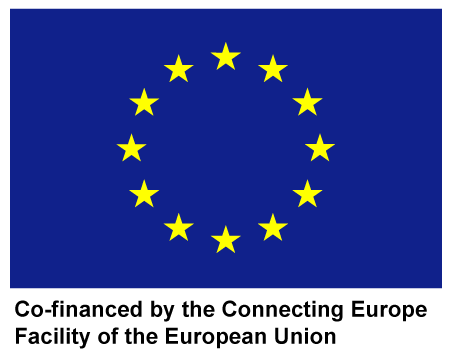
Cooperative Urban
Mobility Portal
Explore Connected and Cooperative Mobility

Cooperative
Urban Mobility Portal
Explore Connected and Cooperative Mobility
Barcelona
Bilbao
Bordeaux
Copenhagen
Newcastle
North Brabant
Thessaloniki
Vigo
City settings and mobility challenges
Moreover, the connections between Barcelona and neighbouring cities are very crowded with cars on a daily basis, which also raises a need to cover them to improve the inter-urban mobility.
C-ITS services
The C-ITS services which have been implemented in Barcelona focus on safety and traffic efficiency, as drivers are provided with notifications aiming to improve attentiveness, inform about network conditions, and promote eco-friendly driving.
The services Road Works Warning, Road Hazard Warning, Green Light Optimal Speed Advisory, Signal Violation Warning, Flexible Infrastructure, In-Vehicle Signage, Motorcycle Approaching Indication, Warning System for Vulnerable Road Users, Emergency Vehicle Warning, and Probe Vehicle Data are implemented at large-scale, covering the entire city area as well as the main arteries connecting with other cities.
All services operations are currently supported by cellular communication technology (4G LTE) enjoyable with Android smartphones.
C-ITS infrastructure
The C-ITS systems in Barcelona are already fed by multiple data sources from different organizations, infrastructures and devices. Traffic lights, emergency vehicles, cameras, digital panels, open data, probe data, etc. are the sources that enable the C-ITS services in the city.
All this data sources are handled by the IDIADA Service Provider, which fuses them, converts to C-ITS information and disseminates to the relevant vehicles/users using the app.
C-ITS App
The app providing cellular communication-based C-ITS services to end-users is developed by IDIADA and is one single free app giving access to all the C-ITS services implemented in the road network of Barcelona for drivers, motorcyclists and cyclists. The app is working in background mode minimizing the user interaction and allowing to use the preferred navigation apps (i.e.: Google Maps, Waze, etc.) while the C-ITS alerts are shown on top of everything only when necessary. Moreover, the app provides interoperability as users can experience common C-ITS services in other cities where these services are applicable. The app is available in Spanish and English languages in the Google Play Store.
End-users engagement
The end-users of C-ITS services in Barcelona are regular drivers. The app is used exclusively by the citizens (drivers, motorcyclists and cyclists). There are no users’ organizations involved.
Local partnerships
Local partners comprise of parties from the public as well as the private sector.
- IDIADA: Leader of the deployment of the C-ITS services in Barcelona, leading also technical and dissemination activities.
- Barcelona City Council: Contributed to the organization and support of the deployment in general. In particular, Barcelona has provided all open data from the city, the traffic lights’ information and has collaborated actively in the implementation of the EVW using firefighters’ vehicles.
- RACC: Contributed to the user engagement and different dissemination activities carried on during the project. RACC has been the main dissemination entity for the Barcelona deployment in order to bring users onboard. Moreover, information of the traffic status is also reported by them.
- Piaggio: Contributed on identifying potential motorcyclists (incl. offering free installation of the Piaggio PMP device), on the specifications for the Motorcycle Approaching Indication service and also on dissemination activities.
- Servei Català de Trànsit: Offering digital panels and real-time traffic status information for the Barcelona metropolitan area.
- Tunels de Barcelona-Cadí: Offering real-time data of the lane status and speed limits of the tunnels. This allows offering pre-warnings to the users about to enter in the Tunel de Vallvidrera.
- ADASA: Contributed on the implementation in the Barcelona City Council internal systems for the EVW service.
Barcelona
Bilbao
Bordeaux
Copenhagen
Newcastle
North Brabant
Thessaloniki
Vigo



This website has received funding from the European Union’s Horizon 2020 Research and Innovation Programme
under Grant Agreement number 723311.

